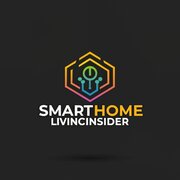Solutions
How Smart home 6 technology upgrades and increase the value of your home?

The price of installing smart home technology has decreased and accessibility has increased over the last several years. The term “internet of things” is becoming more popular these days.
The installation of smart home features in your property will not only make it easier and more cost-effective for you to live there, but they will also make it more desirable to private buyers on the market.
According to the findings of a survey on buyers’ trends conducted by the National Association of Realtors (NAR), this generation accounts for the biggest proportion of prospective property purchasers. As a result, you can’t afford to dismiss this particular market.

What exactly is a technology for the smart home?
Smart thermostats
At the very least, programmable thermostats have been available since the 1950s. The difficulty, however, is that the majority of the basic clock-type thermostats are difficult to operate and difficult to figure out. Because they can determine
whether you are there or absent and make adjustments to the temperature settings of your house appropriately, the more modern thermostats eliminate the need for any guessing and, in fact, the majority of the thinking involved in the process.
The Nest smart thermostat, which presently costs $249 but is projected to save users an average of $173 per year on their energy bills, is one of the most popular smart thermostats. This is one of the most well-liked pieces of technology for the smart home, and it is essential for linked homes.
Smart Smoke Detector
Another product of intelligent technology, the smart smoke detector, has the potential not only to save you money (about 5% on your insurance premiums) but also to save your life in the event of a fire.
According to a news report from CBS, a figure indicating that two-thirds of all home fire fatalities occur in residences where the smoke detectors are missing or disabled is cited.
This is something that many of us have resorted to at one time or another out of sheer frustration when our typical “dumb” detector insists on shrieking an alarm every time we try to fry up some bacon.
You will be able to continue frying without having to worry about being interrupted if you have a smart detection. The Birdie and the Nest Protect are two examples of such devices; in addition to monitoring smoke, they monitor levels of carbon dioxide and the quality of the air in the surrounding area.
They are even able to give you a notification on your mobile device, such as a smartphone or tablet if anything goes wrong. These items may be purchased at a retail price of $119 and $99, respectively.
At the very least, programmable thermostats have been available since the 1950s. The difficulty, however, is that the majority of the basic clock-type thermostats are difficult to operate and difficult to figure out.
Because they can determine whether you are there or absent and make adjustments to the temperature settings of your house appropriately, the more modern thermostats eliminate the need for any guessing and, in fact, the majority of the thinking involved in the process.
The Nest smart thermostat, which presently costs $249 but is projected to save users an average of $173 per year on their energy bills, is one of the most popular smart thermostats. This is one of the most well-liked pieces of technology for the smart home, and it is essential for linked homes.
Smart Door Locks
If you have a smart door lock, you won’t ever have to fish around in your pocket for a key again, and you won’t have to resort to concealing an extra key in a fake plastic rock either.
Instead, these gadgets that are equipped with WIFI and/or Bluetooth may, with the help of your smartphone, automatically identify when you come home and open the door as soon as you are standing outside.
In addition, you may design them to provide access only to certain visitors, such as members of your family, close friends, or real estate agents. This is a convenient feature.
One of these devices, the August Smart Lock, which costs 249.99 dollars, even has a feature that could be of particular use to home sellers. This feature is called the Guestbook function, and it allows you to send a message through the app to any potential visitors or real estate agents with advice or instructions for showing your home.
The Guestbook function is one of the features that is included in the August Smart Lock. Due to the bidirectional nature of this service, your realtor will also be able to provide feedback for you in return.
At the very least, programmable thermostats have been available since the 1950s. The difficulty, however, is that the majority of the basic clock-type thermostats are difficult to operate and difficult to figure out.
Because they can determine whether you are there or absent and make adjustments to the temperature settings of your house appropriately, the more modern thermostats eliminate the need for any guessing and, in fact, the majority of the thinking involved in the process.
The Nest smart thermostat, which presently costs $249 but is projected to save users an average of $173 per year on their energy bills, is one of the most popular smart thermostats. This is one of the most well-liked pieces of technology for the smart home, and it is essential for linked homes.
https://www.youtube.com/watch?v=O-AAUjHMqZU
Smart Sprinkler Control
If you live in an area where you routinely need to water your lawn during the summer months, investing in a sprinkler system that is both efficient and intelligent may save you a lot of time and energy, not to mention money.
Your sprinkler system will be automatically adjusted to account for the season as well as the weather if you have one of these devices, which can be configured using a computer or an app on your smartphone.
The manufacturers of one such system, the Rachio Iro, say that their product may save the majority of customers more than thirty per cent on the amount of water they use for outdoor activities. However, some users report cutting their water costs by as much as sixty per cent.

Smart Lightings
According to Energy Star, the cost of lighting your house accounts for around 12% of the yearly energy bill for your home, which works out to approximately $264 per year.
Even while it may not seem like much, even a small amount adds up over time, and advanced technology can assist you in making decisions that are “better.”
You can effortlessly turn lights on and off using your smartphone, and you can also programme them to execute particular behaviors like as gradually increasing brighter as you wake up or shutting off automatically whenever you leave the house using smart lighting dimmer and sensor systems.
By acting as a motion detector and making it less dangerous for you to walk about in your well-lit yard at night, intelligent outdoor lighting may also assist raise the overall level of safety and security surrounding your home.
With the installation of a combined dimmer and sensor system, Lutron lighting systems estimate an annual savings of sixty per cent. However, the amount of energy you save may vary depending on how you use the system.
At the very least, programmable thermostats have been available since the 1950s. The difficulty, however, is that the majority of the basic clock-type thermostats are difficult to operate and difficult to figure out.
Because they can determine whether you are there or absent and make adjustments to the temperature settings of your house appropriately, the more modern thermostats eliminate the need for any guessing and, in fact, the majority of the thinking involved in the process.
The Nest smart thermostat, which presently costs $249 but is projected to save users an average of $173 per year on their energy bills, is one of the most popular smart thermostats.
This is one of the most well-liked pieces of technology for the smart home, and it is essential for linked homes.
Smart Solar Panels
Solar technology, on its own, is a very astute method for powering your house since it is clean, green, and an unlimited source of renewable energy. However, the most recent innovations in the solar sector involve the creation of gizmos like smart junction boxes.
These boxes make it possible to monitor the performance of individual panels or even a whole array in the event of an emergency like a tornado or fire.
Solar America believes that the installation of solar panels will save you more than $1,500 annually on your power costs, while the United States Department of Energy determined that installing solar panels can enhance the value of your property by $15,000 when it comes time to sell it.
Installing solar panels may be rather dear, with the typical installation costing somewhere about $10,000; however, there are federal tax credit schemes that can lower the cost by around 30%.
At the very least, programmable thermostats have been available since the 1950s. The difficulty, however, is that the majority of the basic clock-type thermostats are difficult to operate and difficult to figure out.
Because they can determine whether you are there or absent and make adjustments to the temperature settings of your house appropriately, the more modern thermostats eliminate the need for any guessing and, in fact, the majority of the thinking involved in the process.
The Nest smart thermostat, which presently costs $249 but is projected to save users an average of $173 per year on their energy bills, is one of the most popular smart thermostats. This is one of the most well-liked pieces of technology for the smart home, and it is essential for linked homes.
FAQS
Does Using Smart Home Technology to Raise the Value of Your Home?
Even though the return on investment for each of these enhancements varies, there is no question that each of these services is a benefit that is guaranteed to appeal to house buyers whenever you want to sell your property.
Speaking of making better decisions, when the time comes for you to sell your home, be sure to check out top companies. Here, we are also committed to making your life easier by putting you in touch with the very best real estate agents for your specific requirements.
What makes smart houses the new future?
Because of this, people’s perspectives on their houses, the possessions they keep there, and the ways they use the resources available to them are changing.
More and more consumers want goods, services, and surroundings that facilitate their new multi-modal lifestyles by providing easy transitions between modes.
Now that we have gadgets in every room, information can be found everywhere. Our houses are now equipped to monitor everything from environmental noise and air quality to energy use.
Devices like smart doorbells allow our smart homes to learn our routines and keep tabs on the world outside our front doors.
-

 Solutions2 years ago
Solutions2 years agoHow to Connect Your Vizio TV to WiFi Easily Without a Remote?
-

 Solutions2 years ago
Solutions2 years agoWhy is My Samsung TV Picture So Dark? Exploring the Possible Causes
-

 Accessories2 years ago
Accessories2 years agoCan A Hdmi Splitter Extend The Display To 2 Monitors?
-

 Gadgets2 years ago
Gadgets2 years agoFitbit Symbols Meaning: What Do The Fitbit Icons Mean?
-

 Accessories2 years ago
Accessories2 years agoDo Smart Thermostats Run On Batteries? Let’s Find Out
-

 Solutions2 years ago
Solutions2 years agoWhy Can’t I Stream Netflix From My Phone? | Solution
-

 Solutions2 years ago
Solutions2 years ago8 Ways How To Stop Google Home Nest From Crackling
-

 Solutions2 years ago
Solutions2 years agoHow To Fix Charging Not Available? Iphone Liquid Detected




